Any transmission is a unit that allows you to transfer torque from the engine to the wheels (sometimes through gearboxes, transfer cases and other units) at different ratios. The automatic transmission does this without any input from the driver. A characteristic feature of an “automatic” car is therefore the absence of a clutch pedal. And the majority of cars today are automatic. We tell you what an automatic gearbox is and how to use it properly.
What types of automatic transmissions are found in cars
| Popular posts |
|---|
| What to do to prolong the life of your manual gearbox |
| Automatic transmission: what it is, how it works |
Traditionally, transmissions in cars with two pedals are called “automatic”, but there are different types of automatic transmissions. Although they serve the same purpose, automatic transmissions differ in design. They can have different numbers of ranges (gears), the possibility of manual control, mechanical or electronic selectors and so on. But there are much more important differences – in the way they work.
Hydromechanical (classic) automatic transmission
The design of this type of automatic transmission, and even more so the principle of operation, is quite difficult to explain. However, we have a separate article on this subject. To simplify matters, the mechanism of the “automatic” can be visualised as follows. The torque converter is attached to the crankshaft of the engine. This is an analogue of the clutch, responsible for transmitting torque – only it does so by pumping oil into itself. This is why it is called a hydro-mechanical transmission, and why it is called a “classic” automatic transmission, as it was the first to be invented and is more common than other types of automatic transmission.
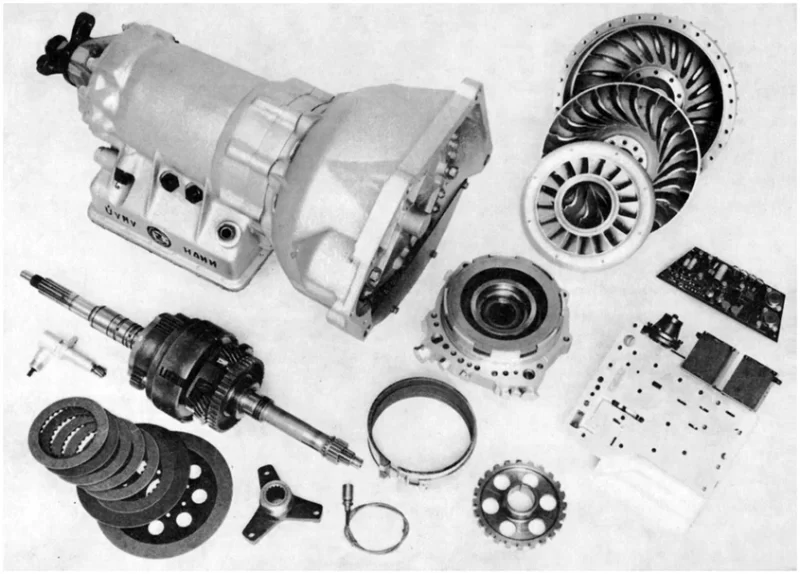
Another important element of the classic ‘automatic’ is the planetary train, which consists of the sun gear and crown gear, as well as the satellites and driver. It can be thought of as a set of gears in an automatic transmission, except that there are no pairs of gears with different ratios. The principle of the automatic transmission is as follows: the speed of the output shaft (and therefore of the wheels) is adjusted by locking the necessary elements of the planetary train.
CVT
Its second name is continuously variable transmission. There are really almost no familiar gears here, and the ratio of the gearbox changes smoothly. To understand how this type of “automatic” transmission works, imagine two shafts. On each shaft is a pair of conical discs with their apexes facing each other. One of the pair can move along the axis, the other is stationary.
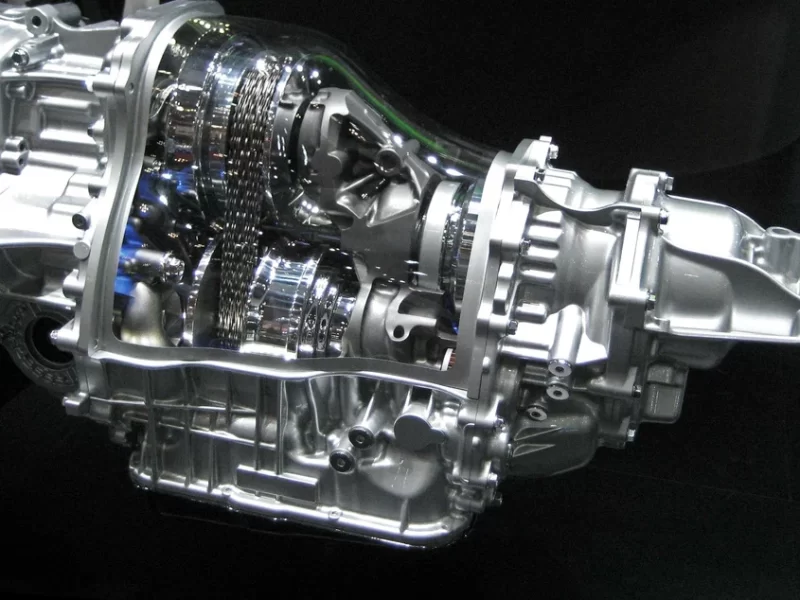
A flexible metal band or special chain is stretched between these pairs. If you bring the moving disc closer to the stationary one, the cones push the belt outwards, creating an improvised large-diameter pulley. If you move it further away, you get a small diameter pulley. By synchronising the moving pulleys on the drive and driven shafts, it is possible to adjust the ratio of the variator. Roughly speaking, the system works like changing gears on a bicycle: if we want to go faster, we choose a large sprocket on the drive shaft and a small sprocket on the driven shaft. When we’re going uphill, it’s the other way round. But in a variator, the pulley system is responsible for changing diameters, and it does so smoothly rather than in jumps.
Robotic Gearbox
Or just “robot”. Structurally, it is a mechanical gearbox – with shafts, clutches and synchronisers – but the choice of gears in it is not directly controlled by the driver, but automated by servo-drives. It also opens and closes the clutch during gear changes. The old, simpler “robots” had a clutch – and they spent a lot of time shifting, and driving sometimes became a torture because changing gears was accompanied by uncomfortable “nods” and jerks.
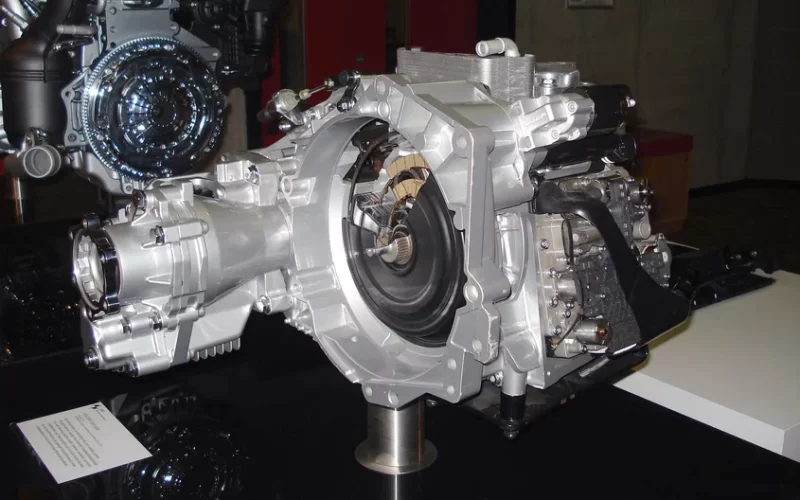
In order to transmit the torque almost continuously, robot boxes with two clutches were invented. The most popular example is Volkswagen’s DSG. Here, the gears are divided into even and odd – each ‘package’ with its own input shaft and clutch. When one disengages, the other simultaneously engages the next (or previous) gear. This is why these gearboxes are called “pre-selective” – the choice of gear is made in advance.
How automatic transmissions work
The classic “automatic” and variator transmission has four basic modes, which can be selected using the gear selector in the cabin:
- P (Parking). It is used when parking for long periods of time. In this mode, the transmission is locked and the car is held firmly in place. However, when parking on a slope, it is recommended to use the handbrake in addition.
- R (Reverse). Reverse mode. It is locked while the vehicle is moving for safety reasons.
- N (Neutral). The connection between the engine and the wheels is broken. In fact, it is similar to “neutral” on manual transmissions. In this mode, a car with an automatic transmission can be towed for short distances and pushed (but of course you can not start the car “with a push”).
- D (Drive). The main driving mode. In it, switching ranges is automatic.
The robotic box, like most modern automatic transmissions, has a fifth mode – manual gear selection. This is indicated by M (Manual) or simply by the symbols “+” and “-“. The gears can be shifted with the gear lever itself or with paddles.
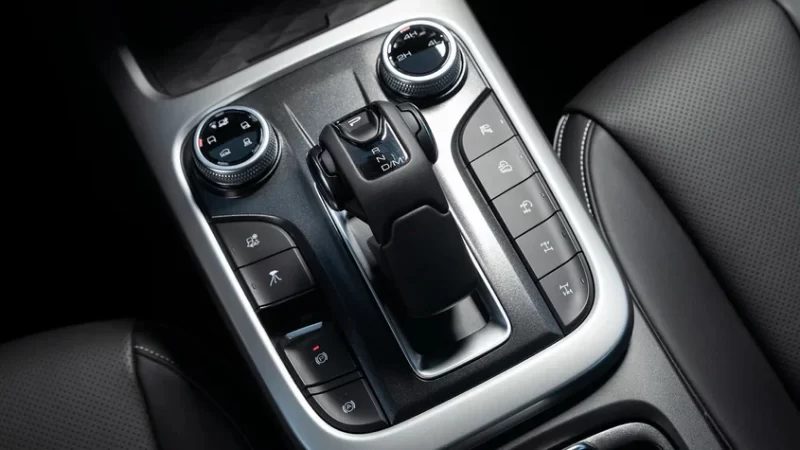
In older ‘automatics’, instead of manual gear selection, it was possible to limit the range shifts by force. These modes are called D3, D2, D1 or simply 3-2-1. The number indicates the gear above which the gearbox will not shift. Restricted modes are useful when it is necessary to maintain constant, even traction – for example when driving in mud or when towing another vehicle.
Finally, some gearboxes have S and L modes. The first is for more active driving: in this mode, the electronics allow the engine to rev up to higher revs at each stage and try to shift as quickly as possible. The second, on the other hand, is for off-road driving. In this mode the automatic gearbox only uses the first gear. Next to L there may be a number indicating the maximum permitted range (as in the case of D).
Finally, in advanced boxes you will also find the W mode, which is often activated by a button. This letter stands for winter. In this mode the car starts up as gently as possible, often from second gear to avoid slipping on slippery surfaces. Shifts are also as smooth as possible.
The advantages and disadvantages of automatic transmissions
Now that you know how the ‘automatic’ box works, you can imagine its advantages and disadvantages. Let’s start with the former.
- Ease of management. It is especially important for novice drivers. They will not have to be distracted by the work with the clutch and the lever of the manual transmission. It is enough to switch the selector once in D, and at the end of the trip – in P. Now it is even possible to get a license exclusively for cars with automatic transmission. It is easier to pass the exam, but behind the wheel of a car with a “mechanical” with them can not sit down.
- Comfort in motion. Modern automatic transmission switches very quickly and smoothly (not to mention variators, which have no gears or ranges at all). Due to this, passengers feel comfortable during acceleration and deceleration, as when shifting the gearbox by a very experienced and skillful driver.
- Ideal for the city. In fact, this advantage is a combination of the previous two. In city traffic jams on a car with a manual box has to constantly work with the clutch and lever. With “automatic”, however, heavy traffic is not so annoying.
- Fuel economy in the city. It is considered that cars with automatic transmission spend more fuel than with manual transmission – at least because of the lower efficiency of automatic transmission. But this is when driving in a jagged mode, i.e. with frequent shifts. Outside the city “automatic” (especially variator) much more rationally selects ranges compared to a person, so fuel consumption will be even less than on the same model with a manual transmission.
But, of course, there are also minuses. Almost all of them – a consequence of the more complex design of the automatic transmission.
- High cost. Cars with automatic transmission can cost 5-10% more expensive than exactly the same, but with “mechanics”, because the automatic boxes themselves are expensive in production.
- Costly repair. The automatic transmission can be repaired in any good service, and the automatic transmission requires special equipment and specialized specialists. Even if ordinary service stations take up the repair, most often they just remove the unit and take it to a specialized workshop.
- A range of restrictions in operation. We will talk about this separately.
What can not be done on a car with an automatic transmission
Automatic transmission in general simplifies operation, but at the same time imposes some restrictions. Here is what is undesirable to do on a car with an “automatic”.
- Fast driving after starting. Warming up is required not only for the engine, but also for the automatic transmission. It is a bad idea to actively press the gas pedal immediately after starting. It is better to drive the first few kilometers in a quiet mode.
- Towing long distances. Faulty cars with hydromechanical automatic transmission or variator are better transported on a tow truck. With the engine shut off, the “automatic” works in the mode of oil starvation and can fail. If the nearest service is in a couple of kilometers from the place of breakdown, you can drive “on a tie” (not fast, up to 30 km / h). But it is definitely not worth to drive the car to the neighboring city. It is interesting that robotized boxes (in fact, mechanical) have the same limitations – after all, the clutches in them are usually controlled by hydraulics, which also needs a working pump.
- Bucking in snow and mud. Another sure way to damage the automatic transmission. Prolonged slipping leads to overheating of the working fluid and burning of frictions, and their replacement is expensive. More about it – in our other article.
- Towing another vehicle or trailer. There is no strict prohibition, but if you intend to travel often with a heavy trailer, it is better to take a car with a “mechanical”. Towing another car is also allowed as an exception. And it is better that the object of towing is lighter than your car.
So, in brief
- Automatic transmissions can be of several types: hydromechanical, robotic, variator. Structurally, they are completely different.
- Any automatic transmission eliminates the need to change gears manually. But some give such an opportunity, and there is no clutch pedal anyway.
- “Automatics” are more expensive than MKPP – both in themselves and in repair. But they provide a higher level of comfort.
- It is undesirable to tow other cars with automatic transmission, to drive “on a tie”, as well as to tire in snow or mud.
What Color Should Transmission Fluid Be?
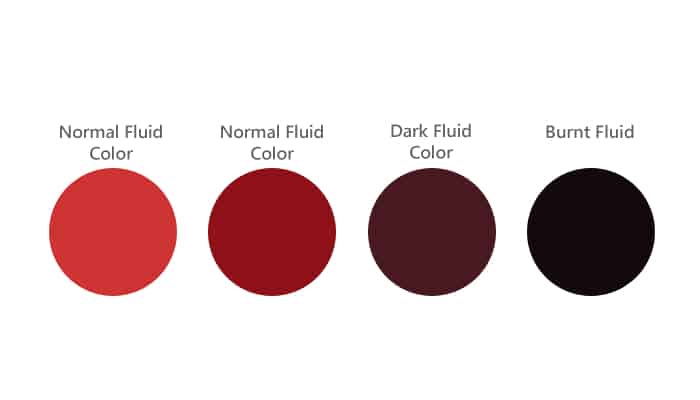


How can you find where to pull the transmission to add to your transmission fluid
I can’t find where to put my transmission fluid at